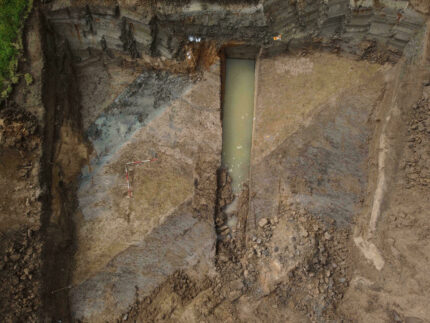 The UNESCO World Heritage Committee has awarded World Heritage status to the Lower Germanic Limes, the northern frontier of the Roman Empire, in the Netherlands and Germany. The frontier line is composed of 102 archaeological sites — military and civilian settlements, towers, roads, harbours, an acqueduct, cemeteries, an amphitheater, etc. — from the Rhenish Massif in Germany to the North Sea coast in the Netherlands. Many of them are underground, but the whole boundary line is dotted with archaeological parks and museums and in the collective, the newly-minted World Heritage site is the largest archaeological monument in the country.
The UNESCO World Heritage Committee has awarded World Heritage status to the Lower Germanic Limes, the northern frontier of the Roman Empire, in the Netherlands and Germany. The frontier line is composed of 102 archaeological sites — military and civilian settlements, towers, roads, harbours, an acqueduct, cemeteries, an amphitheater, etc. — from the Rhenish Massif in Germany to the North Sea coast in the Netherlands. Many of them are underground, but the whole boundary line is dotted with archaeological parks and museums and in the collective, the newly-minted World Heritage site is the largest archaeological monument in the country.
The Limes is celebrating its new status by revealing more of its early Roman history. Archaeologists have discovered a 2,000-year-old Roman road and a canal in the town of Oosterhout, near Nijmegen, in the Netherlands. Located on the banks of the Rhine, Nijmegen was founded as a Roman military fort on the Lower Germanic Limes in the 1st century B.C. It is the second oldest city in the Netherlands, and was an important strategic position for the Roman Army.
The road was wide with drainage ditches on each side; it was paved with packed gravel. Local roads were small, unpaved and perpetually muddy dirt trails, so Roman soldiers built and maintained wide paved roads for the rapid movement of troops and supplies throughout what is now the Netherlands. The original gravel layer is still in situ.
The Roman highway, with its original gravel pavement preserved, provides new insight into the road network of around 2,000 years ago, Eric Noord, who is leading the project, told AFP.
The canal was also a product of Roman military engineering. More than 30 feet wide and deep enough to allow passage of Roman transport ships. Its start and end points have not been determined yet, but archaeologists believe it likely connected the camp at Nijmegen to the Rhine and was used to move heavy baggage — food supplies, building materials, artillery — and troops.

